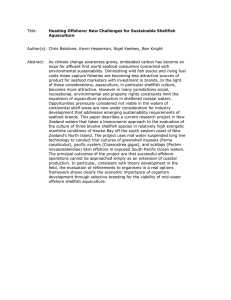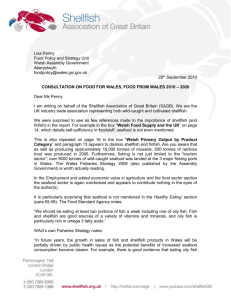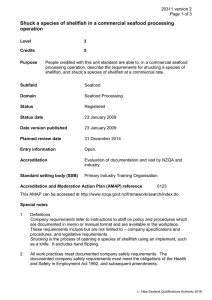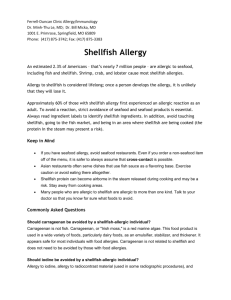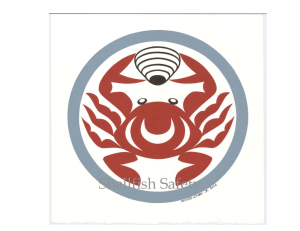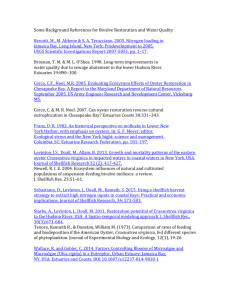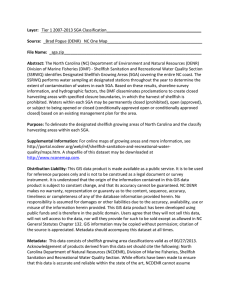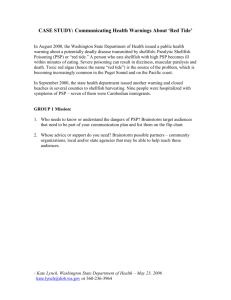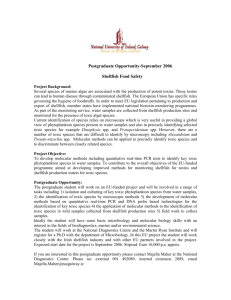FLESH-EATING BACTERIA or necrotizing fasciitis (nek-roe-tie
advertisement
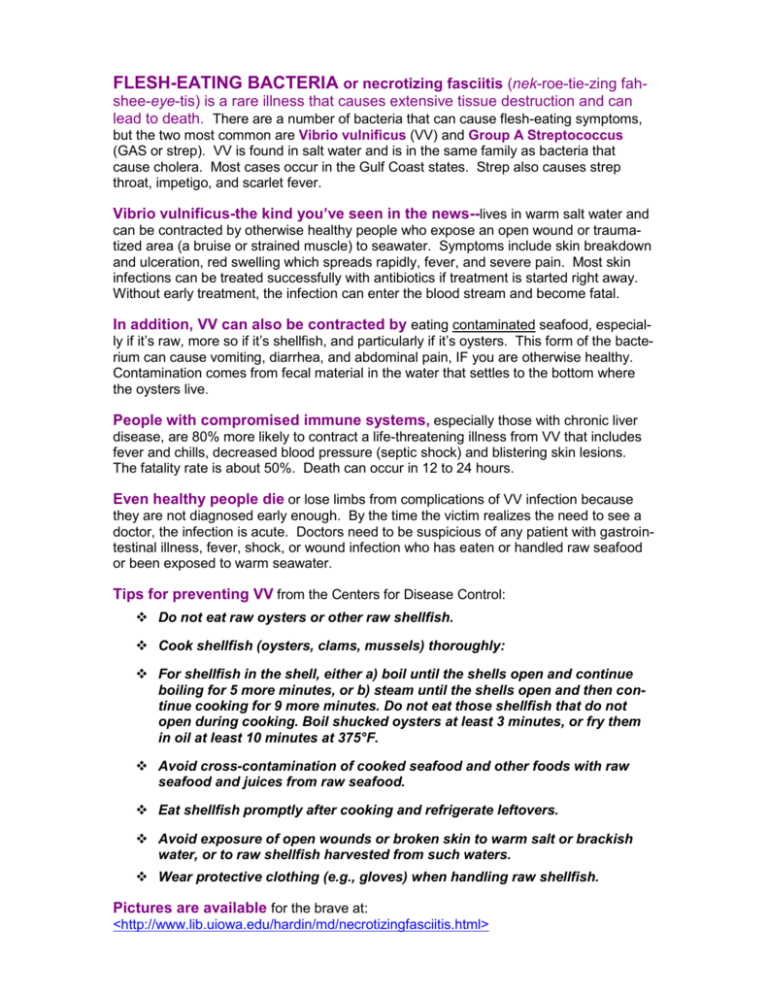
FLESH-EATING BACTERIA or necrotizing fasciitis (nek-roe-tie-zing fahshee-eye-tis) is a rare illness that causes extensive tissue destruction and can lead to death. There are a number of bacteria that can cause flesh-eating symptoms, but the two most common are Vibrio vulnificus (VV) and Group A Streptococcus (GAS or strep). VV is found in salt water and is in the same family as bacteria that cause cholera. Most cases occur in the Gulf Coast states. Strep also causes strep throat, impetigo, and scarlet fever. Vibrio vulnificus-the kind you’ve seen in the news--lives in warm salt water and can be contracted by otherwise healthy people who expose an open wound or traumatized area (a bruise or strained muscle) to seawater. Symptoms include skin breakdown and ulceration, red swelling which spreads rapidly, fever, and severe pain. Most skin infections can be treated successfully with antibiotics if treatment is started right away. Without early treatment, the infection can enter the blood stream and become fatal. In addition, VV can also be contracted by eating contaminated seafood, especially if it’s raw, more so if it’s shellfish, and particularly if it’s oysters. This form of the bacterium can cause vomiting, diarrhea, and abdominal pain, IF you are otherwise healthy. Contamination comes from fecal material in the water that settles to the bottom where the oysters live. People with compromised immune systems, especially those with chronic liver disease, are 80% more likely to contract a life-threatening illness from VV that includes fever and chills, decreased blood pressure (septic shock) and blistering skin lesions. The fatality rate is about 50%. Death can occur in 12 to 24 hours. Even healthy people die or lose limbs from complications of VV infection because they are not diagnosed early enough. By the time the victim realizes the need to see a doctor, the infection is acute. Doctors need to be suspicious of any patient with gastrointestinal illness, fever, shock, or wound infection who has eaten or handled raw seafood or been exposed to warm seawater. Tips for preventing VV from the Centers for Disease Control: Do not eat raw oysters or other raw shellfish. Cook shellfish (oysters, clams, mussels) thoroughly: For shellfish in the shell, either a) boil until the shells open and continue boiling for 5 more minutes, or b) steam until the shells open and then continue cooking for 9 more minutes. Do not eat those shellfish that do not open during cooking. Boil shucked oysters at least 3 minutes, or fry them in oil at least 10 minutes at 375°F. Avoid cross-contamination of cooked seafood and other foods with raw seafood and juices from raw seafood. Eat shellfish promptly after cooking and refrigerate leftovers. Avoid exposure of open wounds or broken skin to warm salt or brackish water, or to raw shellfish harvested from such waters. Wear protective clothing (e.g., gloves) when handling raw shellfish. Pictures are available for the brave at: <http://www.lib.uiowa.edu/hardin/md/necrotizingfasciitis.html> Resources and more information: <http://www.healthtalk.ca/flesh_eating_bacteria_08142004_2932.php> <http://www.cdc.gov/ncidod/dbmd/diseaseinfo/vibriovulnificus_g.htm#What%20type%20of%20illn ess%20does%20V.%20vulnificus%20cause> http://www.hc-sc.gc.ca/pphb-dgspsp/publicat/info/necro_e.html http://www.cdc.gov/ncidod/dbmd/diseaseinfo/What%20are%20the%20early%20signs%20and%2 0sym <http://my.webmd.com/content/article/92/101768.htm?z=1728_00000_1000_nb_01>

